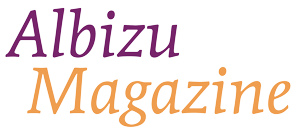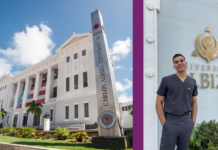S
wallowing difficulties, or dysphagia, is a rising common issue among people of all ages. This condition can significantly impact an individual’s quality of life, including their ability to eat, drink, and communicate effectively. This article will examine this growing concern and why speech-language pathology training is critical for addressing it.

Symptoms of dysphagia
Dysphagia can present itself in several ways and can be challenging to diagnose. Some common symptoms of dysphagia include:
- Difficulty swallowing liquids or solids
- Choking or coughing during meals
- Pain when swallowing
- Drooling
- Hoarseness or change in voice quality
- A feeling of food “sticking” in the throat
- Regurgitation or bringing up food after swallowing
Risks and causes of dysphagia
Dysphagia can result from a variety of underlying medical conditions or treatments, including:
- Neurological disorders such as Parkinson’s disease, multiple sclerosis, or a stroke
- Cancer of the head and neck
- GERD (gastroesophageal reflux disease)
- Surgical procedures involving the mouth or throat
- Radiation therapy to the head and neck
Additionally, specific populations are more at risk of developing dysphagia, including the elderly, individuals with developmental disabilities, and those with a history of head and neck injuries.
Types of Dysphagia
Dysphagia can be classified into two main types: oropharyngeal and esophageal. Oropharyngeal dysphagia refers to difficulties in the oral and pharyngeal stages of swallowing, where food is chewed, mixed with saliva, and then moved to the back of the throat to be swallowed. This type of dysphagia is often caused by neurological conditions and can result in choking, coughing, and regurgitation during meals. On the other hand, esophageal dysphagia refers to difficulties in the muscular contractions of the esophagus that help move food from the throat to the stomach. Issues with the muscles or the esophagus, such as strictures, ring formations, or nerve damage, typically cause this type of dysphagia.
Treatment for dysphagia
Treatment for dysphagia will vary depending on the underlying cause and type of dysphagia. In many cases, a team approach, including a speech-language pathologist, physician, nurse, nutritionist, or occupational therapist (among others), may be necessary to manage the condition effectively.
A speech-language pathologist can provide exercises and strategies to improve swallowing, such as modifying the texture and consistency of food and liquids, changing the position of the head during meals, and practicing swallowing exercises to rehabilitate the patient. In some cases, a speech-language pathologist may also perform an instrumental evaluation of swallowing during the assessment. Instrumental evaluation might include radiologic studies such as a modified barium swallow or fiber-endoscopic evaluation of swallowing (FEES). A modified barium swallow study involves using a contrast material (barium) to highlight the mouth and throat structures in fluoroscopic video equipment (radiology) during swallowing. These studies can help identify areas of difficulty in the swallowing process and guide treatment recommendations.
The role of a clinician in managing dysphagia
A speech-language pathologist plays a crucial role in helping individuals with dysphagia regain their ability to eat, drink and communicate effectively. In addition to working with individuals to improve their swallowing, they are also responsible for educating them and their families about the condition and how to manage it. This may include providing recommendations for modifying the texture and consistency of foods and liquids and teaching techniques for improving the overall safety and efficiency of the swallowing process.
Speech pathology training and dysphagia
Becoming a speech-language pathologist requires a strong foundation in anatomy, physiology, and communication sciences. In addition, you’ll need to deeply understand the causes, types, and treatments for dysphagia and the skills necessary to evaluate and treat individuals with this condition.
The Albizu University Graduate Speech-Language Pathology Program will include coursework in normal and disordered swallowing, anatomy and physiology of the speech and swallowing mechanism, and assessing and treating swallowing disorders. Students will also be able to work with individuals with dysphagia in a clinical setting, allowing them to gain hands-on experience working with this population.
In conclusion, dysphagia is a growing concern in speech-language pathology, requiring specialized training and expertise to manage effectively. As a prospective speech-language pathology student, it’s essential to understand the basics of this condition, its symptoms, causes, types, treatments, and the role of a clinician in managing it. With the proper training and experience, prospects can make a meaningful impact in the lives of individuals with dysphagia and help them regain their ability to eat, drink, and communicate effectively.





























